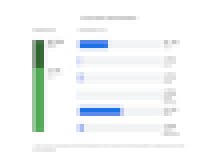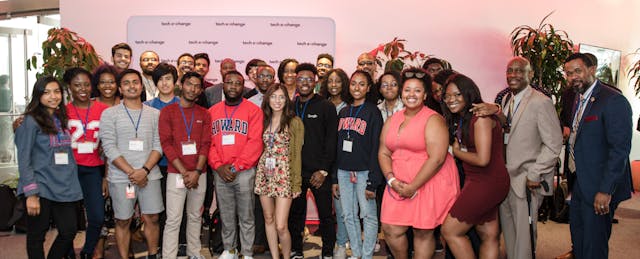“Computer science for all” — a favorite catchphrase in edtech — can only be achieved when computer science education is as accessible to traditionally marginalized groups, such as black and Latinx students, as it is for everyone else. That’s the impetus behind Tech Exchange, Google’s latest effort to increase diversity in tech and make its own company look more like its users.
The program, announced Tuesday and launched this fall, sends 65 students from 11 Historically Black Colleges and Universities (HBCUs) and Hispanic-Serving Institutions (HSIs) to the West Coast to stretch, test and sharpen their computer science savvy.
Tech Exchange builds on the model of Howard West, a pilot that began last summer and placed students from Howard University, a Washington, D.C.-based HBCU, in Google’s Mountain View, California headquarters to learn first-hand the skills and concepts they’d been studying in class. Participating students received course credit and a living stipend.
Even in their early conversations about Howard West, officials at Google planned to expand the program to other institutions. And after seeing that the pilot was “extremely successful,” Wayne A. I. Frederick, president of Howard University, said they got to work on bringing it to life.
“I think this was a necessary next step, to really expand the opportunity and try to scale it up,” Frederick said in an interview. “The other component we’re now bringing in is getting students to mix and mingle with others — creating a support system and network that goes well beyond the walls of Howard.”
Last year, 26 Howard students spent their summers learning and researching at the Googleplex. They took on full course loads, earning 12 credits in applied computer science — with subjects ranging from machine learning to software engineering.
This year, 29 Howard students are joined by their counterparts at other HBCUs and HSIs — five students, for example, are coming from Maryland’s Morgan State University — for an entire academic year.
The 65 students are college juniors, said April Alvarez, Google’s educational equities program manager, and have a substantial foundation in computer science. That second component is key, she said, as the curriculum is “engaging, rigorous” and more hands-on than traditional computer science courses.
Five HBCU/HSI faculty members are joining the students in Mountain View. Each will be paired with a Google employee, who will consult and collaborate with the faculty member throughout the year.
The other participating institutions are Florida A&M University; California State University, Dominguez Hills; Morgan State University; New Mexico State University; Prairie View A&M University; North Carolina Agricultural and Technical State University; Dillard University; University of Texas, El Paso; University of Puerto Rico, Mayagüez; and Spelman College.
By offering the program during the fall and spring semesters, students can fall into the natural cadence of a traditional academic schedule, stay on time for graduation and gain experience that will distinguish them from their peers come job-hunting season, Frederick said.
In addition to empowering students and providing them with first-hand experience in Silicon Valley, Google launched the Tech Exchange with hopes of boosting its own diversity numbers in the long-run.
“We’re not as diverse as we’d like to be,” Alvarez acknowledged. “We’re focused on building a more diverse Google, one that definitely reflects our users. ... This Tech Exchange is a piece of that puzzle.”
Google is not unique in the industry — the tech sector has historically underrepresented female, black and Latinx individuals — but the company has taken steps to be transparent about its makeup. Google publishes an annual diversity report detailing the company’s demographic breakdown. The 2018 edition of the report reveals that just 2.5 percent of employees are black and 3.6 percent are Latinx (and those numbers are up from previous years).

But excluding the “non-tech” employees at Google, those numbers dip further — 1.5 percent black and 2.8 percent Latinx.
For Google to maintain its levels of influence and success, Frederick said, the company must become more reflective of its users and, by extension, the global population.
“If they want to continue to be a leader, they must know who their consumers are and hire people who represent that full demographic,” Frederick said. “You want diversity of thought in every discussion, and you need to do that by hiring people with the diversity of background in every experience.”
Half of the students in the inaugural class of the Google Tech Exchange program have since landed big-name tech internships (five of which, Frederick said, were at Google). That’s certainly an indicator of success for architects of the program, he said, but he also hopes students will pursue their own ideas.
“We also want them to be entrepreneurs,” Frederick said. “We want this to lower their apprehension about taking on the risk, going into the unknown and starting their own business. We want them to feel they are talented enough to do exactly that.”
Alvarez echoed that sentiment.
“These students — we hope they’ll come back and work for a place like Google or start their own Google.” Either way, she said, “they’re going to be leaders in the industry.”


